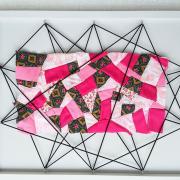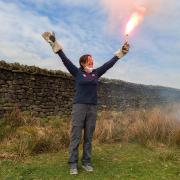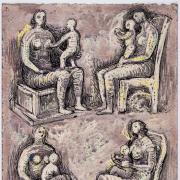A young Yorkshire woman leading the charge in the resurgence of the art of taxidermy

What do you immediately think of when someone mentions taxidermy? Old stately homes full to the rafters with stuffed trophy animals on their walls, museum corridors or dingy Victorian pubs with slightly creepy hunting memorabilia within? Well, me too, if I'm honest. But views on taxidermy are changing across the UK and there is certainly a new generation focused on moving away from this archaic idea of the industry and challenging people to view it as an art form.
Despite the world of taxidermy having been mainly male dominated and there being fewer professionals now than 50 years ago, there has been something of a resurgence in the industry recently, with many of those new professionals being women. Emilie Woodford from York is among this new movement, and credits her love for animals as the reason she fell into the career.
Having been struck down with ME when she was 12, Woodford struggled with school due to her illness. She has always had a love for animals though, so decided to pursue a career in veterinary nursing where she became fascinated by wildlife. 'We used to have quite a lot of wildlife brought in, and we would treat them but unfortunately if they did have injuries that were too much for them to enjoy a good quality of life, they would be euthanised,' says Woodford. 'I just thought it was such a waste. I think with wildlife, wild animals are very secretive so you only ever see tiny glimpses and don't get to see them up close in detail. There was a particular tawny owl that came in and I asked the vet if I could have him, so I kept him in my freezer for a while until I did a taxidermy course with Dave Hornbrook in Guisborough.'
It started out as a hobby for Woodford, but has now become her full-time job and one which works around the needs of her ME. I wonder what the reaction was to her changing professions and taking up something so niche. 'People think it's a bit weird and the general consensus seems to be, 'Ooo, why do you want to do that?!'' says Woodford. 'But after talking to people, they understand that it is about having that animal up close, about celebrating the fact that we have so much amazing wildlife that we live beside and not taking it for granted.'

Contrary to popular belief, much of the taxidermy world now is full of those who want to celebrate animals in an ethical way, and is less about the trophy hunting days of its past. In fact, many professional taxidermists in the UK are vegan or vegetarian - Woodford included. 'I'm vegetarian, but I would rather have an animal that had an amazing life and then died, than have an animal that has been farmed first and gone to an abattoir,' she says. 'All taxidermists value the animal they are working on and would rather see it live in the garden than on their workbench, but it's a celebration of that animal. For example, people just aren't aware that starlings are blue, they are grey, they are purple too. It's making people more aware of wildlife for me.'
In a sense, with the recent rise in veganism and vegetarianism, taxidermy could be coming back around as people are more aware of the processes behind animals and how they die, but also because more people want to celebrate them. If the animal's life has naturally come to an end, the process is more about breathing life back into that creature and educating people on the details and the beauty. With roadkill in countryside areas so prevalent, it's a way of preserving something beautiful instead of allowing it to go to waste.
So, for many taxidermists today too, it's about also discovering more and seeing the life that was once there. Not to mention that we can use the stuffed animals for educational purposes too, in schools and museums. 'Often people enquire about commissions for a specific species, or a couple of wildlife ladies let me utilise their birds so that they can be used for talks that they present,' says Woodford.
She hopes her work has led people to be more aware of wildlife and its plight and that it inspires them to build ponds, or put in bee-friendly and wildlife attracting plants in their garden. 'It's promoting and preserving,' she smiles. 'Most of the animals that come to me come from the vets and they will come with a little note about where they've come from and why.'

Has Woodford noticed a change in the way everyday people view the industry over the past few years? 'Yes, I think once people get to know you, they realise that the animals aren't hunted like back in the Victorian times and trophy taxidermy isn't really a thing in the UK. It's nearly always done in honour of the animal, or people find the bird themselves and bring them to me - there's often a story attached then for them too,' she says.
Clearly, the community around Woodford have become more accepting of the notion and I can't help but smile as she talks of her Grandma saving her birds in her freezer or Brenda in the village ringing up to say she's got a goldfinch for her. 'People are definitely on the lookout for me,' laughs Woodford. 'But it shows that other people don't want them to go to waste either.'



























